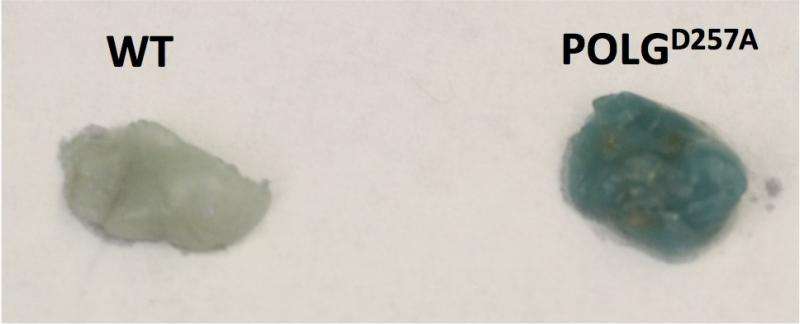Signaling from dysfunctional mitochondria induces a distinct type of senescence

Buck Institute faculty Judith Campisi, PhD, says age researchers need to stop thinking of cellular senescence, now accepted as an important driver of aging, as a single phenotype that stems from genotoxic stress. Research from her lab reveals that cellular senescence, a process whereby cells permanently lose the ability to divide, is also induced by signaling from dysfunctional mitochondria - and that the arrested cells secrete a distinctly different "stew" of biologically active factors in a process unrelated to the damaging free radicals that are created in mitochondria as part of oxygen metabolism. The results are published in Cell Metabolism.
"We don't yet know how much this process contributes to natural aging," said Campisi, adding that those studies are currently underway. "But we do think the findings are important in addressing mitochondrial diseases, and those age-related diseases, such as some forms of Parkinson's, which involve mitochondrial dysfunction."
The discovery was unexpected and was made by postdoctoral fellow Christopher Wiley, PhD, who (in collaboration with Eric Verdin, PhD, from the Gladstone Institute) was eliminating sirtuins, a class of proteins long linked to longevity, one by one in human cell cultures. "The senescent phenotype only occurred when we eliminated the mitochondrial sirtuins," said Wiley. In addition, Wiley saw that the senescent cells secreted a different SASP (senescence-associated secretory phenotype) than expected - one that lacks the IL-1-dependent inflammatory arm - a major factor in the SASP originally identified in the Campisi lab in 2008. The authors dubbed this new phenomenon MiDAS - mitochondrial dysfunction-associated senescence.
Along with identifying MiDAS, Wiley also found that mitochondrial dysfunction upset the balance of NAD+ (an enzyme that is a co-factor for sirtuins), which arrested cell growth and prevented the IL-1-associated SASP. "The NAD+ balancing act happens outside the mitochondria in the cytoplasm of the cell," said Wiley. "This really highlights a signaling role for mitochondria, something understudied in the context of disease. And it identifies a new type of SASP, underscoring the existence of different types of senescence."
Wiley also identified the MiDAS SASP in mice genetically engineered to develop progeria in response to mitochondrial mutations, which causes rapid aging. The MiDAS SASP suppressed adipogenesis, which plays a vital role in metabolism and the creation of fat cells. He says the work provides a link to lipodystrophy, a medical condition characterized by abnormal or degenerative conditions involving fat tissue, adding that early HIV drugs (which are still being used in third world countries) deplete mitochondrial DNA and that patients receiving the drugs often show a particular loss of subcutaneous fat, especially in their face.
"For any disease that has a mitochondrial component this research adds a potential explanation for the real driver of the dysfunction—and it's not free radicals, which we ruled out in our study" said Campisi. "Our finding suggest a new role for mitochondria when it comes to affecting physiology."
More information: Mitochondrial Dysfunction Induces Senescence with a Distinct Secretory Phenotype, Cell Metabolism, DOI: 10.1016/j.cmet.2015.11.011


















